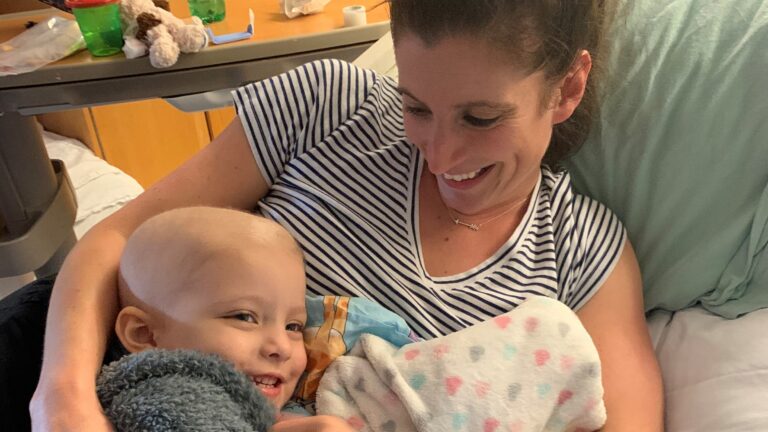Closer Look
Opinion: The love a mother and daughter found in the PICU

Courtesy Sarah McCarthy
"This is a girl who knows what she wants," the nurse told Sarah McCarthy, about her 5-year-old daughter Molly (above). "Each time I try to take my hand back, she bites on her tube and sets off the alarm. As soon as I hold her hand again, she stops and falls back asleep."
McCarthy knew pediatric intensive care units well; she'd spent her career in them. Being there with Molly was different. Each day, she was asked how her daughter looked compared to yesterday: She was the most consistent presence. The question weighed her down. She worried she'd miss something important. But then she started to notice more continuity in the care team, how the calm that Molly had only found in sedation now came from a familiar voice, as she explains in a moving First Opinion about her daughter's last days. Read more.
genome editing
Researchers pull a genome editing system out of a new kingdom of life (ours)
CRISPR genome editing was famously derived from an ancient tool bacteria evolved to fend off viruses. But a couple years ago, multiple labs realized that some eukaryotes, the more complex kingdom of life where humans reside, have very similar systems embedded in their genomes.
Now, two labs affiliated with MIT have shown these systems can be turned into genome editing tools, STAT's Jason Mast tells us. Feng Zhang, the early CRISPR pioneer, published work in Nature yesterday. And two of his former students, who now co-run a lab, posted a preprint earlier this month. Although researchers caution the work is still very early, this new system could have advantages for certain types of therapies, such as for muscle disorders. For example, because it comes from much closer relatives (thank you, uncle amoeba), it might be less likely to trigger a damaging immune response when put into humans for long periods.
research
In monkeys, researchers find a way to forestall an immune storm after a stem cell transplant
A stem cell transplant — to treat leukemia, say — comes with a risk that the donor's T cells will identify the patient's tissues as foreign and trigger a potentially deadly immune showdown. That recognition has to do with proteins that adorn the membranes of cells. In a paper published in Science Translational Medicine yesterday, scientists showed that blocking one of these proteins could prevent acute intestinal graft-versus-host disease in monkeys.
It's a little like plugging up the entry of a Rube Goldberg machine: If you can't pop in a marble, then it won't knock down the dominoes. The monkeys that had their Notch signaling pathways inhibited after a stem cell transplant were spared the immune showdown and were more likely to survive. How that might translate to humans remains to be seen.
No comments